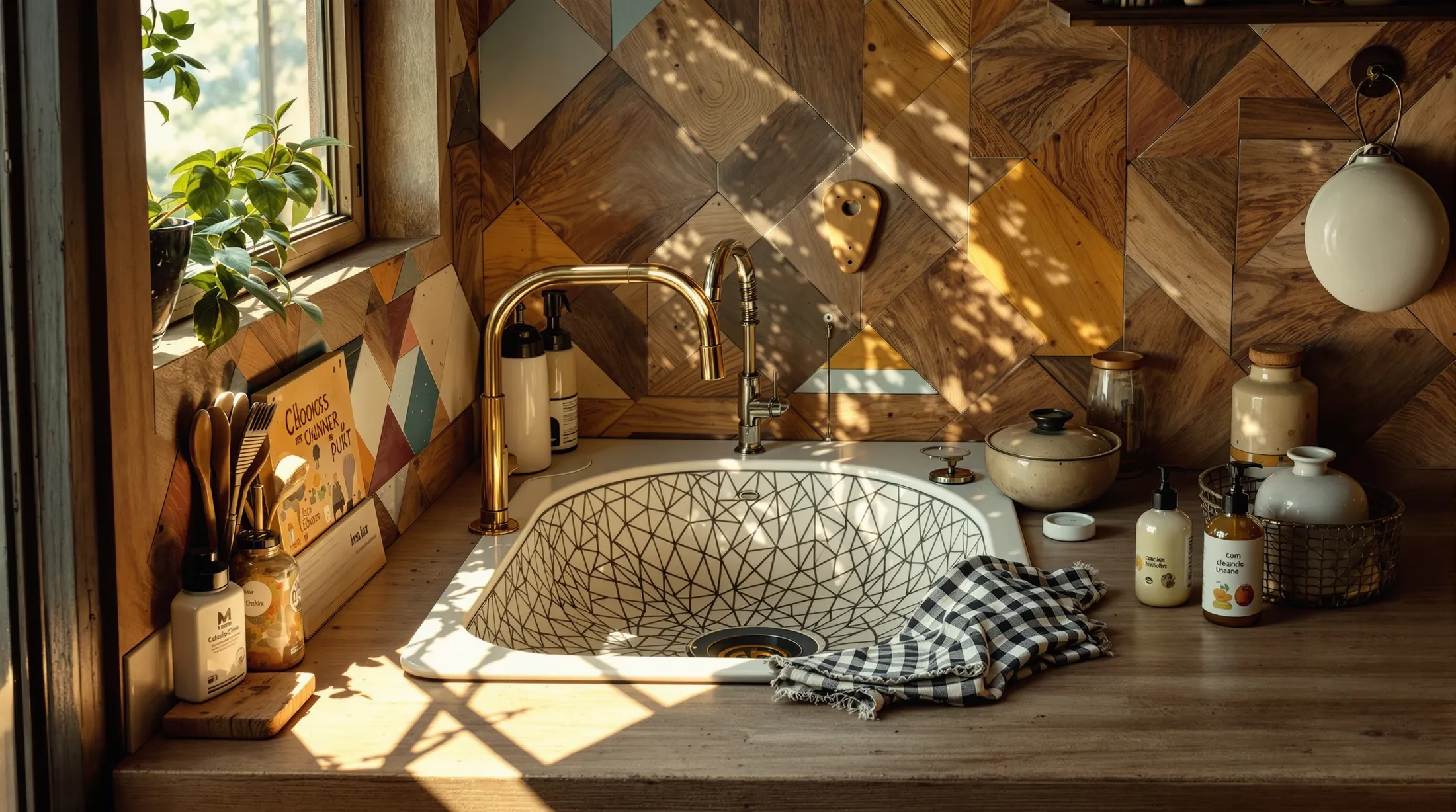Tiny House Sink: Choosing the Perfect Fit for Your Space
Looking to maximize functionality in your tiny house kitchen? Choosing the right sink can make or break your compact living space. Let’s explore how to select the perfect sink that combines practicality with style, ensuring every inch of your tiny house works efficiently.
Understanding the Importance of a Tiny House Sink
In tiny house living, your sink serves as a multifunctional hub for daily activities, from food preparation to personal hygiene. Every square inch matters, making sink selection crucial for optimizing your limited space.
High-quality materials and thoughtful design ensure durability and easy maintenance – essential factors when replacement options are limited. The ideal sink seamlessly integrates with your countertop, potentially adding valuable prep space when covered while optimizing kitchen workflow during use.
Why Size Matters in Tiny House Sinks
- Available space measurement – including surrounding work areas and cabinet access
- Balance between footprint and functionality
- Consideration of daily usage patterns
- Depth requirements for plumbing accommodation
- Impact on surrounding counter space
Common Challenges with Tiny House Sinks
- Limited space constraints affecting size selection
- Restricted water supply systems requiring efficient fixtures
- Creative drainage solutions for mobile homes
- Premium storage space compromised by plumbing
- Noise considerations in compact living quarters
- Accessibility for cleaning and maintenance
Choosing the Right Sink for Your Tiny House
Success in selecting the perfect tiny house sink lies in balancing space efficiency with functionality. Precise measurements of your available area ensure comfortable fit while maintaining room for other kitchen essentials. Consider both the sink’s footprint and depth, as deeper basins offer more utility but require additional under-counter space.
Materials to Consider for Tiny House Sinks
| Material | Benefits | Considerations |
|---|---|---|
| Stainless Steel | Lightweight, durable, heat-resistant | Can be noisy, shows water spots |
| Composite (Granite/Quartz) | Scratch-resistant, quiet, color variety | Heavier, higher cost |
| Acrylic | Affordable, lightweight, easy installation | Less durable, requires careful maintenance |
Design Ideas for Tiny House Sinks
- Corner installations for maximizing unused space
- Undermount designs for seamless counter integration
- Collapsible or fold-down options for extreme space saving
- Integrated workstations with sliding accessories
- Custom-built solutions for unusual spaces
- Adjustable depth systems for versatile use
Installation Tips for Tiny House Sinks
Installing a sink in your tiny house requires careful planning and precision. Two primary installation methods are available: top mount (drop-in) and undermount sinks. Top mount options excel in DIY-friendly installation, requiring only a pre-cut hole and underneath clamps for secure mounting. Undermount sinks create an elegant, seamless appearance but demand more advanced installation expertise.
- Verify plumbing system compatibility
- Take precise measurements of available space
- Account for cabinet dimensions
- Consider plumbing connection requirements
- Check clearance specifications
- Plan for proper drainage alignment
Plumbing Considerations for Tiny Houses
| Water Supply Options | Drainage Solutions |
|---|---|
| City hookups | Traditional sewer connections |
| Well water | Septic systems |
| Self-contained tank systems | Gray water solutions |
Water conservation plays a vital role, especially in homes with limited tank capacity. Install water-efficient faucets with aerators or flow restrictors to optimize consumption. For cold climate locations or mobile tiny houses, proper pipe insulation prevents freezing damage. Ensure adequate ventilation around sink plumbing and correctly sized P-traps to prevent moisture issues and maintain proper function.
DIY vs. Professional Installation
- DIY Benefits:
- Cost savings
- Personal satisfaction
- Ideal for top-mount sinks
- Simple plumbing configurations
- Professional Advantages:
- Expert space-efficient solutions
- Prevention of costly mistakes
- Specialized knowledge for complex installations
- Mobile-specific considerations
The optimal approach often combines DIY efforts with professional oversight, particularly for critical connections and final inspections. This hybrid method ensures both cost efficiency and installation quality.


